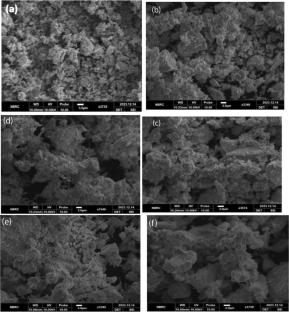Realization of High Figure of Merit in Fe/Ni co-Doped SnO2 Nanoparticles by the Engineering of Charge and Phonon Transport
Abstract
This manuscript reports a high figure of merit (ZT) of 0.95 for tin dioxide (SnO2) nanoparticles achieved through engineering of the electronic charge and phonon transport. Co-doping of Fe/Ni atoms is introduced to enhance the lattice scattering, while a post-growth annealing technique is used to enhance the charge transport to achieve the highest power factor value. Un-doped and Fe/Ni co-doped SnO2 nanoparticles are synthesized via a hydrothermal method and subsequently annealed at different temperatures ranging from 600°C to 900°C in steps of 100°C. It is observed that the electrical conductivity and Seebeck coefficient exhibited a substantial increase from 112 to 150 S/cm and 98 to 132 µV/°C, respectively, as the annealing temperature increased to 900°C. This behavior is supposed to be linked with imparting the thermal energy to charge carriers that may enhance charge carrier transport. An appreciable decrease in the observed thermal conductivity is supposed to be associated with enhanced phonon scattering at the interface of excessively available secondary phase domains in the crystal structure of SnO2. This enhancement in power factor (2.5 × 10−2 W/m °C2) and substantial decrease in thermal conductivity (203.55W/m °C) resulted in a ZT value of 0.95. To the best of our knowledge, this reported value of ZT for Fe/Ni co-doped SnO2 nanoparticles is the highest value reported in the literature to date.


 求助内容:
求助内容: 应助结果提醒方式:
应助结果提醒方式:


